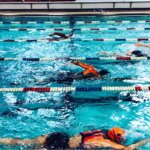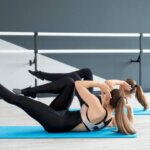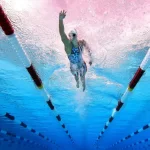Too many triathletes sacrifice strength training in favor of additional swimming, biking or running sessions. This is not a smart move. A well-executed strength training program will allow you to carve up to 25 percent out of your run, swim and bike volume while also improving performance. You may even find yourself enjoying better race-day results.
As you get older, you may get wiser, but your race performances will start to suffer, and you will no longer be able to do the huge volume of miles out on the roads – unless you incorporate strength training into your routine at an early stage.
You may feel like a wimp when you first begin your strength straining, but adding this to your workout regimen will help you build overall body strength and eventually, speed.
You’ll find the results to be dramatic. The workouts can be incorporated into your already scheduled training programs – adding strength training just twice a week for thirty to forty-five minutes at a time.
Here are some exercises to get you started. These can all be easily done just about anywhere:
- Squats – these work your glutes and quads and generate power for cycling and strength necessary for hilly running.
- Stand with your legs wider than your shoulders. Keep your weight over your heels at all times. Lower your butt down towards the floor like you’re sitting in a chair and bend your knees until your thighs are parallel to floor. Do 10 to 20 reps.
- Lateral Dumbbell Raise – works your shoulder joint to prevent shoulder swimming injuries.
- Hold a dumbbell in each hand. Keep your elbows even with your body and extend your arms away from your torso. Extend your arms out sideways, keeping your elbows even with your body. Stop arms parallel to ground. Do 10 to 20 reps.
- Calf Raises – works lower legs and helps push-off for running.
- Place one foot on a step and the other foot raised off the step just slightly. Hold a dumbbell in the arm on the same side as the calf you are working. Lower the heel until you feel a moderate stretch. Hold for 10 seconds. Do 10 to 20 reps with each leg.
- Dumbbell Pullover – works all muscles in catch phase of freestyle stroke
- Lay face up. Clasp dumbbell between both hands with arms extended straight toward the ceiling. Then fully extend your arms behind your head, with weight touching floor, if possible. Do 10 to 20 reps.
- Backward Lunges – works adductors and glutes and targets all muscles used in push phase of hilly running
- Stand with legs together. Step back, extending one leg out behind, and lower your body into a split squat. Drag the toes of the extended foot on the floor on the way back up to the starting position. Do 10 to 20 reps with each leg.
- Tricep Extensions – works back of upper arms and maintains form through back half of swim stroke
- Kneel one leg on the bench, place the other foot on the floor. Bend forward 45 degrees from the hips. Place a weight in the hand on same side as the leg that is on the bench. Keep elbow tight against your side. Begin with weighted arm bent. Extended arm back fully in straight position. Do 10 to 20 reps on each arm.
- Lat Pull Downs – this basic upper body exercise targets the upper back and helps improves pull phase of swim stroke.
- Grasp the bar with your arms slightly wider than shoulder-width apart. Lower the bar to your chin or just below keeping your elbows pointed straight down.
At the end of your workout, you should finish with sit-ups. It is important to strengthen the abdominals because they help prevent lower-back problems and support the diaphragm, but don’t overdo it. Over development of your abdominal may restrict your ability to breathe during intense exercise.
If you have a question on how to do any of these exercises correctly or would like additional information on how to properly train for a triathlon, contact me today.






